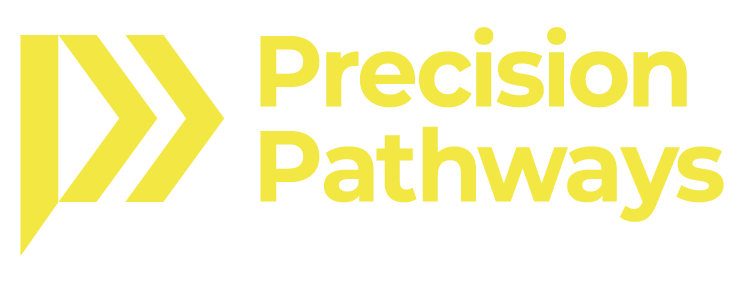The Stress Buffer: Building Everyday Habits That Protect Your Energy
Workplace stress is part of modern life, yet many people try to outrun it rather than learn how to work alongside it. You can be dedicated and ambitious without feeling wired and worn out. The key is to build a personal stress buffer so pressure does not spill over into burnout. This post gives you a clear way to understand your stress load, spot early signs before they escalate and put simple habits in place that protect your focus, mood and performance.
What Your Stress Buffer Is
Think of your capacity as a container. Meetings, deadlines, decisions and people management all pour into it during the day. Restful moments empty it a little so there is space again. A strong buffer means you can handle busy periods without tipping into overwhelm. A weak buffer means even small setbacks feel heavy. Your goal is not to remove pressure entirely, it is to strengthen the walls of the container and empty it steadily so you stay steady.
The Early Signs People Often Miss
Stress rarely arrives all at once. It builds in small ways that are easy to dismiss. If you can catch these early you can act before the spiral begins.
Subtle signals to watch for
Shorter attention span and more tab switching than usual
Reaching for caffeine or sugar more often to keep going
Irritation with small delays or minor mistakes
Drifting to phone scrolling when faced with a thinking task
Sleep that feels light or broken even after a normal night in bed
None of these make you weak. They are simply messages from your body that your buffer needs attention.
Map Your Stress Load Before You Change It
You cannot improve what you do not see. Spend one ordinary week mapping your load. Keep it very simple.
How to map your load
Note your energy score three times a day on a scale of one to ten
List the top two demands that drained you and the one thing that helped
Circle the moments when your mood dipped or tension rose
By the end of the week you will see patterns. Perhaps late afternoon meetings drain you more than you realised. Perhaps open ended tasks cause more anxiety than defined jobs. This gives you a place to start.
Three Levers That Strengthen Your Buffer
There are many ways to manage stress, yet most people benefit most from consistent work on three levers. These are simple and practical which is why they work.
1. Shape the day so it fits your brain
Your brain is not designed to run at full speed all day. Give it rhythm.
Focus blocks
Choose one or two windows each day for deep work. Protect them with a clear start and finish. Close mail, silence notifications and set a short plan on a sticky note. Aim for one meaningful output not ten scattered tasks.
Recovery windows
Create three short resets across the day. Sixty to ninety seconds is enough. Stand up, breathe slowly into your belly or step outside for two minutes. Do it before you feel frazzled, not after.
Exit routine
End the day with a five minute closure. Write tomorrow’s top three priorities, clear your desk and physically leave the work area if you can. Your mind settles faster when it knows what comes next.
2. Train the stress response rather than fight it
Stress is a body response. Work with it instead of wrestling it.
Breathe to shift state
Try a slow count of four to inhale, a soft pause, then exhale for six. Longer exhales cue the nervous system to settle. Two minutes is enough to lower tension and clear the head before a meeting or decision.
Ground your attention
Name five things you can see, four you can feel, three you can hear, two you can smell and one you can taste. This quick sensory check pulls you out of mental noise and into the present where choices are easier.
Reframe with a question
When a worry loops ask one of these
What part of this is in my control
What is the smallest useful action I can take in the next ten minutes
What would I advise a colleague to do
Questions interrupt rumination and move you back to action.
3. Protect the foundations that keep you resilient
Small lifestyle choices build the base of your buffer.
Sleep that supports performance
Keep the last hour of your evening quiet and dim. Avoid intense work, heavy conversations and bright screens where possible. A cool dark room helps your body get the signal to rest. If you cannot sleep after twenty minutes use a calm reset like reading a few pages or moving to a different chair for a short while. This breaks the frustration loop.
Caffeine with intention
Caffeine is useful for focus yet unhelpful when it becomes the main coping tool. Wait at least an hour after waking before your first coffee to allow your natural alertness to rise, and set a personal cut off in the early afternoon so sleep quality does not suffer.
Movement as a pressure valve
Short walks, gentle stretches or a few flights of stairs move stress chemistry through the body. You do not need a full gym session to benefit. Two or three small bouts of movement through the day help more than one large burst when you are already exhausted.
A Simple Framework for Busy Weeks
High pressure periods still happen. Use this quick framework to keep your balance when the calendar is tight.
Prepare
Decide your non negotiables for the week such as a lunchtime walk or a set finish time twice a week
Brief your team on priority order so last minute noise does not derail the important work
Block ten minute buffers before and after key meetings for notes and breath rather than rushing straight to the next call
Perform
Open each day by choosing your single most valuable task
Use a timer to work in short focused bursts with deliberate mini resets in between
Name your state out loud in your head. Stressed, alert, calm or foggy. Naming it helps you manage it
Reset
Close the week with a light review. What drained me, what helped, what will I repeat next time
Plan one simple reward or rest activity for the weekend so recovery actually happens
Leading Yourself and Others Under Pressure
If you manage people your behaviour sets the tone. You do not need grand gestures to support a healthy culture.
Behaviours that help teams cope
Start the meeting with a calm minute so everyone arrives mentally
Make priority trade offs explicit so people are not trying to complete everything at once
Normalise short breaks between calls
Celebrate progress at the end of the week so effort feels seen
When leaders model steady habits teams follow. Performance improves not because people push harder but because they use their energy wisely.
When Stress Feels Stuck
Sometimes pressure does not ease even when you are doing sensible things. If your sleep feels broken for weeks, if you feel flat most days or if you are losing interest in things you usually enjoy, it can help to speak to a professional. Coaching gives you structure, support and accountability while you build the habits that fit your life. It is not about perfection. It is about finding a way of working that you can maintain without running yourself into the ground.
Your One Week Starter Plan
To turn this post into action choose one step from each section and try them for seven days.
Choose your three
One focus block each morning for your most important task
Three short recovery windows across the day
A two minute breathing reset before difficult meetings
A simple exit routine with tomorrow’s top three
A screen light final hour before bed
Keep a note of your energy score morning and late afternoon. At the end of the week look for even small improvements. Small gains stack up faster than you think.
So…
You do not need a perfect routine to feel better at work. You need a few steady practices that protect your energy and help you reset when pressure rises. Build your stress buffer with simple habits, train your response so your body helps rather than hinders and protect the foundations that keep you resilient. The result is not only better performance, it is a calmer mind and more consistent days that feel within your control.
If you would like support to build a plan that fits your life and work, one to one coaching can help you put these steps in place and keep them going when the diary gets busy.


